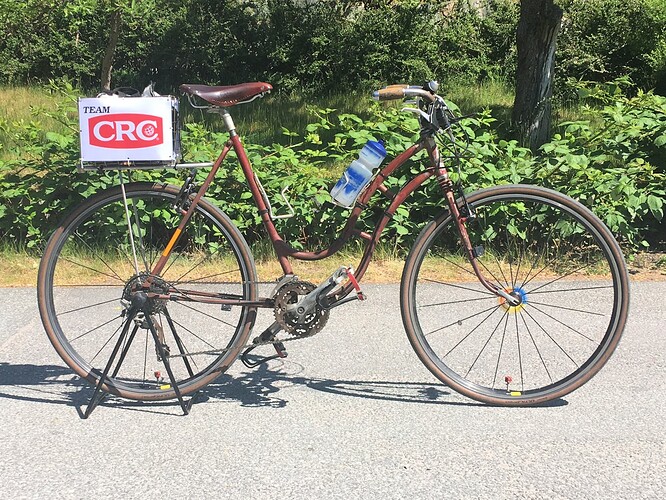I’m most likely at the very bottom of the Intervals.icu users when it comes to performance and experience and I’m having a blast with Intervals 
About me: I’m 67 years old now. I was a life long Professional Couch Potato when it came to endurance training until I started riding somewhere during 2014 and stopped at the back end of 2016 due to health issues.
It’s a chronic issue but with the help of a brilliant doctor things have cleared up OK and I got back into endurance training during 2023.
Like a friend said about training again, we’re not 65 anymore, which I found very funny as well as poignant. I’ve been told that I can forget getting stronger due to the health issues and age but as I think is the case for all Intervals users, that kind of statement is a trigger.
I’m only in it for Long Distance riding. Back in 2016, I did the Swedish Ride of Hope charity ride for children with cancer. 1360 kilometers from one weekend to the next with a daily average of over 150 km, some days averaging above 30 km/hour. The same year I also rode the (in)famous Swedish Vätternrundan for the 2nd time, at a time of 11:44 without a group. That ride was 185 miles, I made it a 1-stopper and was very happy with that result. That of course sets up a natural goal of riding the VR at sub-11 this year but that is most unlikely as the route is now 195 miles with a devastating change in the elevation map, strategically placed at the very end of the ride.
Adding to the general cornfusion is that I ride that bike in the image. A Husqvarna ladies steel bike from 1949, all of 75 years old this year. A very long story but it’s very “updated” to say the least and sports a modern drive train and a power meter 
No matter my low performance and lack of experience, I enjoy numbers and stats and the power meter was of course a game changer. I then needed a solid way of analyzing the numbers. I had done some work in Golden Cheetah back when but was not happy there and was told by strong riders to take a look at Intervals.icu. I did and that was the second game changer in my quest for being a better cyclist. I’m never looking back.
I cannot say enough about Intervals. Sure, maybe it was a tad intimidating at first but that passed pretty soon once I understood how David coded the UI and what features one could expect. Basically, just look for what you’d find interesting and sure enough, it’s in there. Case in point, after a while I started playing around with planned workouts and such and I find that functionality astounding and an important part of my training for this years 195 mile ride in June.
Of course this Forum is brilliant and chock full of knowledge from people who take their time to share and do so in a very pleasant and polite manner which is not the run of the mill experience elsewhere.
Too much too list but just stay at it like I’ve done. I’ve learned more about endurance training in the short time that I’ve been an Intervals user, since October last year, than all before.
Note that David has put in links all over the place that go to external information sites. I think I’ve hit most of them and that has led to countless hours of studying. Not all of it is applicable to my level but “the burden of knowledge is an easy carry”.
I struggled a bit with the Fitness-tab. No problem at first as it seemed “basic” in a way but the more I got into it, the more I understood that I did not grasp it all. Some more studying here on the forum set me straight where riders like @MedTechCD, @Gerald and others have been instrumental in getting me the gist of the underlying dynamics. Thanks guys 
That was the kind of typical wall-of-text rants that I unfortunately produce at times. My short answer to the question of this topic is “everyone with an interest in bicycling”.
